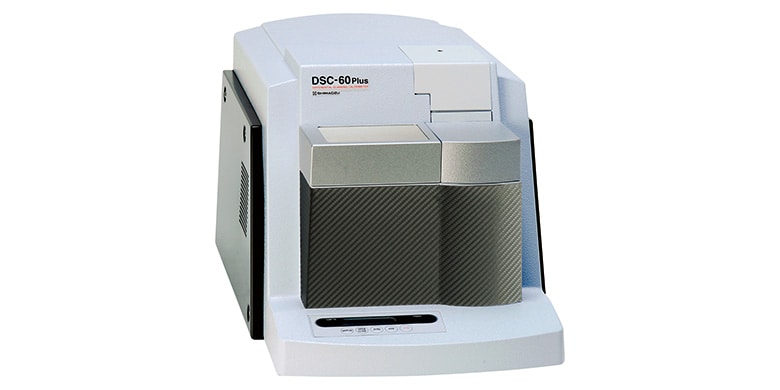
DSC-60 Plus Series
- Measurement of the glass transition with the DSC-60 Plus makes it possible to estimate the hardness of food products from their glass transition temperature. - By using the DSC-60 Plus, it is possible to investigate the relationship between the moisture content and glass transition temperature of foods.
The hardness of food products is an important item in product development and quality control from the viewpoints of food texture (“mouthfeel”) and processability. Although various factors cause differences in the hardness of food products, including the crystal structure, moisture content, and density of the food, the glass transition also has a large influence. As in the case of polymeric materials, many foods become soft and rubbery at temperatures higher than the glass transition temperature, and become hard and brittle and glass-like at lower temperatures. The glass transition temperature of foods changes depending on the moisture content and the glass transition temperature of their component substances. Here, the glass transition temperatures of a soft candy and hard candy with different mouthfeels, three types of saccharides (sugars), and a soft candy with different moisture contents obtained by heat treatment were measured using a Shimadzu differential scanning calorimeter (DSC-60 Plus). The results are introduced in this article.
July 16, 2024 GMT
Some products may be updated to newer models